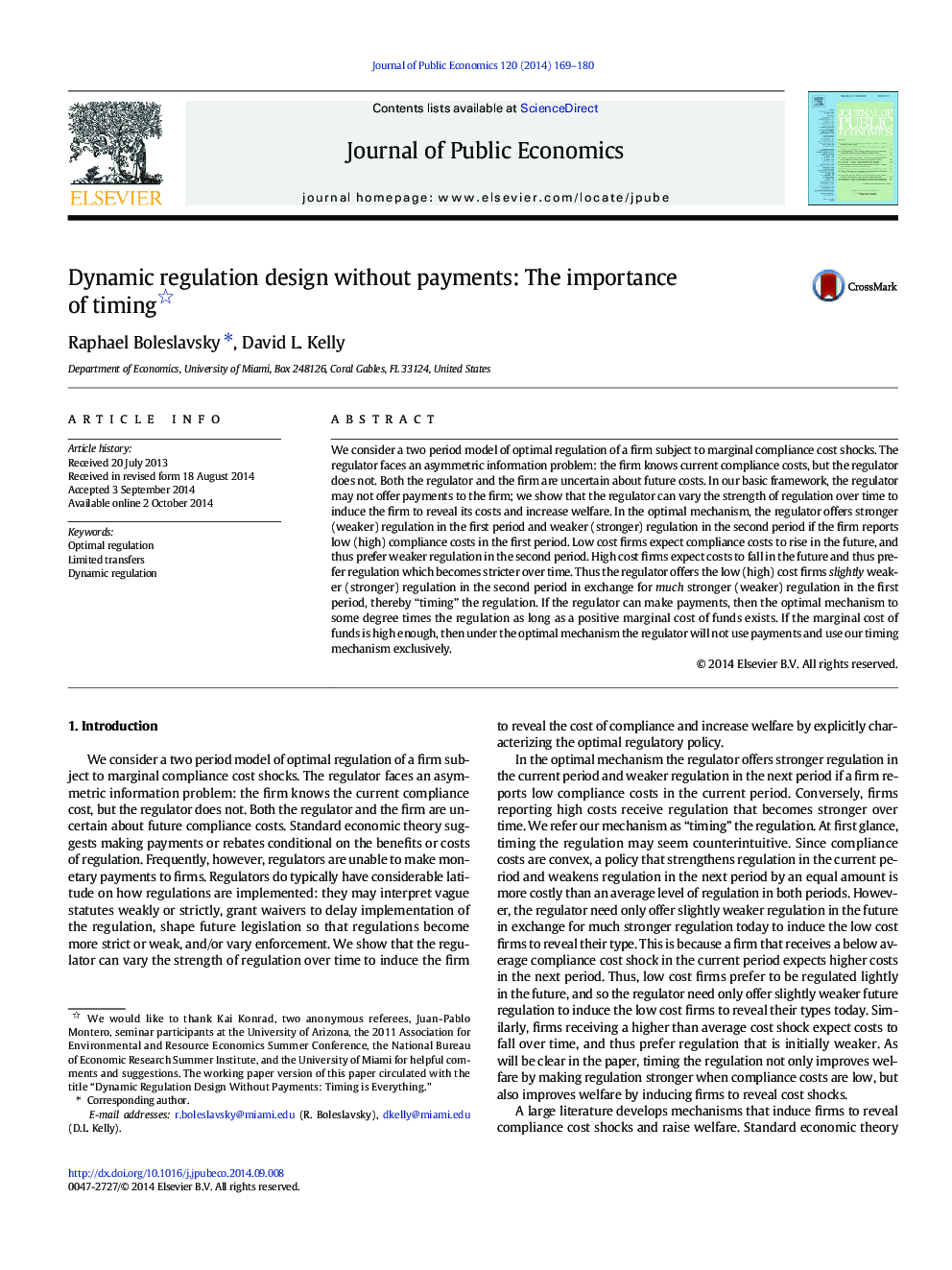| Article ID | Journal | Published Year | Pages | File Type |
|---|---|---|---|---|
| 7370178 | Journal of Public Economics | 2014 | 12 Pages |
Abstract
We consider a two period model of optimal regulation of a firm subject to marginal compliance cost shocks. The regulator faces an asymmetric information problem: the firm knows current compliance costs, but the regulator does not. Both the regulator and the firm are uncertain about future costs. In our basic framework, the regulator may not offer payments to the firm; we show that the regulator can vary the strength of regulation over time to induce the firm to reveal its costs and increase welfare. In the optimal mechanism, the regulator offers stronger (weaker) regulation in the first period and weaker (stronger) regulation in the second period if the firm reports low (high) compliance costs in the first period. Low cost firms expect compliance costs to rise in the future, and thus prefer weaker regulation in the second period. High cost firms expect costs to fall in the future and thus prefer regulation which becomes stricter over time. Thus the regulator offers the low (high) cost firms slightly weaker (stronger) regulation in the second period in exchange for much stronger (weaker) regulation in the first period, thereby “timing” the regulation. If the regulator can make payments, then the optimal mechanism to some degree times the regulation as long as a positive marginal cost of funds exists. If the marginal cost of funds is high enough, then under the optimal mechanism the regulator will not use payments and use our timing mechanism exclusively.
Keywords
Related Topics
Social Sciences and Humanities
Economics, Econometrics and Finance
Economics and Econometrics
Authors
Raphael Boleslavsky, David L. Kelly,
